Activity
Rock Candy Science
The next time you've got a restless young earth scientist on your hands and a rainy day outside, try this exciting experiment. You can use it to demonstrate what a crystal is and in the process, create that enchantingly sweet, fully edible, traditional kid favorite: rock candy. Here's how.
Grade:
Subjects:
Thank you for your input.
What You Need:
- 4 cups sugar (two pounds)
- 2 cups water
- Small cooking pot with tall sides, to avoid spatters
- Large cooking spoon for stirring
- Candy thermometer (optional)
- Tall, clean glass jar
- Cotton string
- Something to hold the string down in liquid (such as a clean, heavy screw)
- Parchment paper, foil, or waxed paper
- Plain pencil, which will hold the string over the jar
What You Do:
- Rock candy is made by creating a "supersaturated" solution: one with much more sugar dissolved in the water than you could possible do at room temperature. Have your child start the experiment by pouring just the water into the saucepan, and then heating it to a boil. If you have a candy thermometer on hand, place it in the pot for a mini experiment in temperature. (Caution, parents: do be sure you supervise these hot stages!)
- Once the water is boiling, pour the sugar into it. Notice that at first the mixture is chalky, since the sugar isn't melted at all. But as the sugar melts, there will be a distinct change: the entire solution will become clear. Do be sure that you and your child stir constantly throughout this phase—if the sugar sticks to the bottom of the pot, it will burn and that will not be so fun! If you're using a thermometer, don't forget to monitor the temperature during this stage to see how hot the solution gets.
- Keep stirring and melting until the solution is completely clear and gets to a full rolling boil (that's a boil with lots and lots of bubbles, but not a boil that's overflowing the pot).
- Pull the pan off the burner, and then gently pour it into the jar. Use a piece of waxed paper to cover the jar.
- Now tie the string around the screw-weight and dip it into the sugar solution, about 2/3 to the bottom of the jar. Let it get nice and wet, and then lay it on another piece of waxed paper or a piece of parchment paper, to dry for several days. In the meantime, let the jar of sugar solution sit on a countertop.
- In about 2-3 days, you'll notice that the string is dry, and if you use a magnifying glass, you will start to see little crystals formed all along it. That’s just what you want! These are the little edges on which the big crystals of rock candy will start to cling and form.
- CAREFULLY place the string back into the jar of supersaturated sugar water, suspended from the pencil and weighted down on the other end by the screw and leave it be for a few days. DO NOT jiggle the jar at any point during that time, and do NOT check the string—there is delicate work underway! The sugar molecules, which were previously suspended in the liquid, are now re-forming, and if you move the solution, you interrupt their progress.
- By 4-5 days later, you'll see a delightful thing: the crystals on your string should be visible, with points and angles and very cool “faces,” which have been created as unique sugar molecules found their way to one another. This process of crystallization happens in nature as well, giving us uniquely beautiful crystal formations from all parts of the globe.
This is a great time to open a geology book and study more…but don't be surprised if your child considers that a distant second step to a pressing matter at hand: EATING this way cool experiment!
Related learning resources
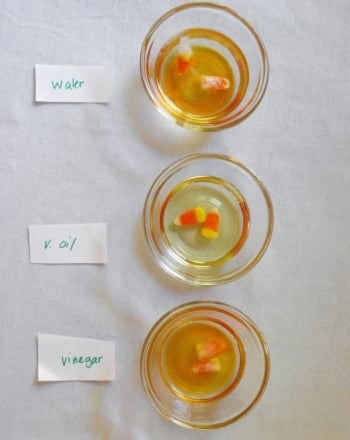
Candy Corn Science
Activity
Candy Corn Science
Young scientists develop a hypothesis, conduct an experiment, and then revise their hypothesis to find out which common household liquids dissolve candy corn.
3rd Grade
Activity
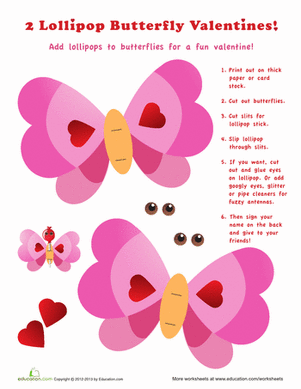
Candy Valentine
Worksheet
Candy Valentine
A candy valentine is always a nice gift on Valentine's Day. Make a candy valentine out of lollipops with this candy valentine worksheet.
2nd Grade
Worksheet

Candy Shapes
Activity
Candy Shapes
Turn sweet treats into miniature masterpieces with this candy melting activity!
2nd Grade
Activity

Halloween Rock Painting
Activity
Halloween Rock Painting
Reinforce your child’s foundational math skills while creating small works of seasonal art with this creative Halloween rock painting activity!
Kindergarten
Activity

Candy Cane Holder
Activity
Candy Cane Holder
This candy cane holder craft helps your little one make a spot for safekeeping sweet treats. Make a candy cane holder with your child this holiday season.
2nd Grade
Activity

Candy Corn Subtraction
Activity
Candy Corn Subtraction
This activity will put those Halloween treats to good use by using candy corn to help your child with her subtraction skills.
2nd Grade
Math
Activity
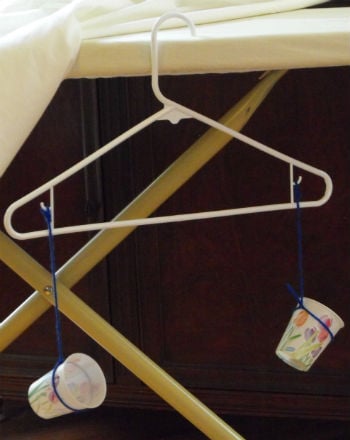
Candy Corn Balance
Activity
Candy Corn Balance
In this activity, young learners will make a balance using a plastic hanger and weigh a variety of small objects using candy corn.
2nd Grade
Science
Activity
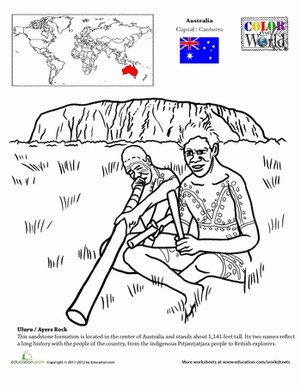
Uluru / Ayers Rock
Worksheet
Uluru / Ayers Rock
Here's a fun way for your child to look at world geography and history, starting with a beautiful coloring page of Ayers Rock/Uluru in Australia.
2nd Grade
Social studies
Worksheet
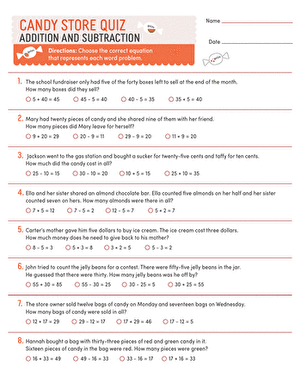
Candy Store Quiz: Addition & Subtraction
Interactive Worksheet
Candy Store Quiz: Addition & Subtraction
Math learners take an extra sweet trip to the candy shop with these one- and two-digit addition and subtraction word problems.
2nd Grade
Math
Interactive Worksheet
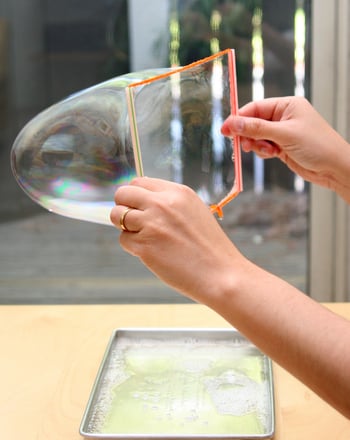
Bubble Science
Activity
Bubble Science
It's not a secret, it's science!
Kindergarten
Science
Activity

Earth Science Vocabulary
Worksheet
Earth Science Vocabulary
Learn the many features of planet earth in this easy earth science vocabulary chart.
2nd Grade
Science
Worksheet
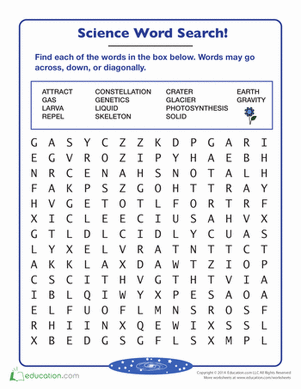
Science Vocabulary Word Search
Worksheet
Science Vocabulary Word Search
This science vocabulary activity is packed with basic science vocabulary words to help the youngest kids warm up to scientific concepts.
2nd Grade
Science
Worksheet
See this activity in a set:
Sizzling Science Crafts



